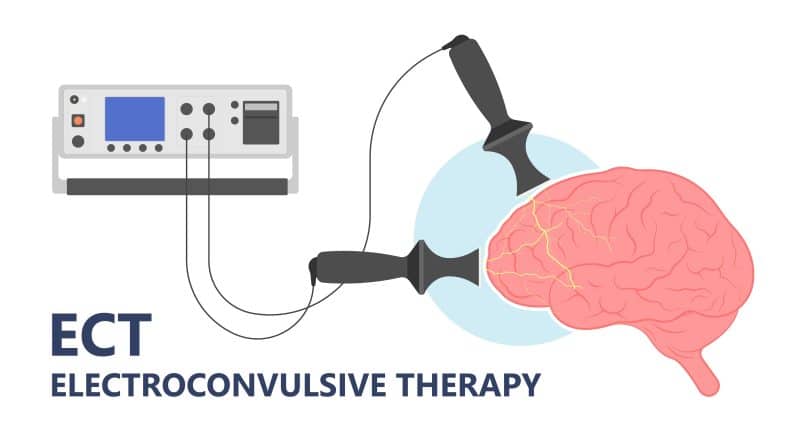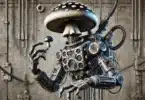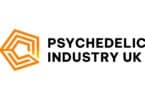Ketamine and psychedelics are getting a lot of attention for their ability to assist in treating mental health disorders like depression, anxiety, and PTSD. But what of people who don’t want to consume a drug to fix their brain? In the world of alternative treatments for psychiatric disorders, you also have the choice to shock the problems away with treatments like electroshock and the newer TMS. What are these treatments, are they an effective cure for depression, and how do they compare to ketamine?
When you think about it, treatments are treatments. The most important aspects of a treatment are whether it works or not, and whether it causes any damage in the process. But we’re a group of opinionated beings that like to draw lines in the sand. And sometimes these lines are afforded more value than they deserve. It might not really matter what you call a treatment if it works well, but the truth is, if you use certain terms, some people simply won’t use it, and it won’t matter how beneficial it is.
The words ‘standard’, ‘Western’, ‘pharmaceutical’, ‘conventional’, or ‘allopathic’ in front of the word ‘medicine’ refer to the standard medical system of today. This is a newer medical tradition of the last couple hundred years only, and is a world of medicine that revolves around synthetic compounds and lab-made medicine. It’s also somehow become the only fully recognized version of medicine despite the many other options that persisted through millennia.
The words ‘alternative’, ‘natural’, ‘Eastern’, ‘plant’, or ‘traditional’ in front of the word ‘medicine’ refer to medical traditions or applications outside of Western medicine. So even though Western medicine is technically the alternative to longstanding medical traditions all throughout the world, it is these other traditions that get dubbed as ‘alternative.’ Alternative medicine involves anything from plant medicine, to acupuncture, to spiritual healing.
Thanks for dropping in. Stay current by subscribing to the Cannadelics Weekly Newsletter, which also gets you access to awesome deals on cannabis flowers, vapes, edibles, smoking paraphernalia, cannabinoid products (including HHC), and a whole lot more. Tis the season to get yourself stoned!
Like I said, the most important aspect should be that a treatment works, and does so without causing more damage than its worth. Unfortunately, these terms of ‘Western’ and ‘alternative’ indicate that many people are only going to be comfortable using one type, regardless of what the other one offers, and this can go in both directions.
Plenty of times people in need of a blood transfusion, or an antibiotic, have died rather than use the Western medicine answer. But probably more frequently, people eschew the natural medicine answers in favor of whatever their Western medicine doctor says. As Western medicine practitioners are often scared or bullied away from accepting natural traditions, there is way less overlap than one might expect when the goal is to help people. And its gotten to the point that the majority living in Westernized countries, are never presented an alternate option.
Whereas the ‘standard’ or ‘Western’ medicine world relies on pharmaceuticals, and tends to treat every problem like an unconnected one-off; the ‘alternative’ or ‘natural’ medicine world relies on plants and other non-medicine treatments for healing, and seeks to understand each individual problem as part of a whole, with treatment geared in a much more holistic way. This is not 100% on either side, but is a basic generalization that can be made between the two.
Electroshock treatment and TMS
There are a lot of options in the world of alternative treatments for dealing with psychological issues. Some even involve shocking your brain. Electroconvulsive therapy (aka ECT or electroshock) must be administered under general anesthesia. The treatment involves tiny electrical currents (70 to 120 volts) passed through the brain that last about five seconds, and which trigger small seizures in the brain which last about a minute. These seizures are so mild that there’s no visual muscle movement, and they’re thought to do a sort of reset for the brain. Sessions last approximately 30 minutes.
Why it does what it does isn’t known; but it seems to have an effect on brain chemistry. The procedure can quickly help with some mental health issues, like depression; causing a reversal in symptoms. Historically it was used for more intense psychiatric issues like schizophrenia and psychosis, but now it’s eyed more for mood disorders. Though there is no true consensus on how well it works, some sources put response rates between 66-79% and remission rates at 47-75%. One of the only other treatments that shows the ability to work so quickly, is ketamine treatment.
Electroshock therapy, like ketamine, is used for treatment-resistant cases of different kinds, and there’s no guarantee that it’ll work for any given person. ECT requires being in a hospital since its done under anesthesia. It can come with side effects like nausea, jaw and muscle aches, headaches, and short term memory loss; and requires some time to recover, in the neighborhood of a few hours to a few days. Electroshock therapy isn’t new, and if you think back, you might recall some scary sounding stories from the past. However, much of that had to do with procedural aspects, that have been improved on.
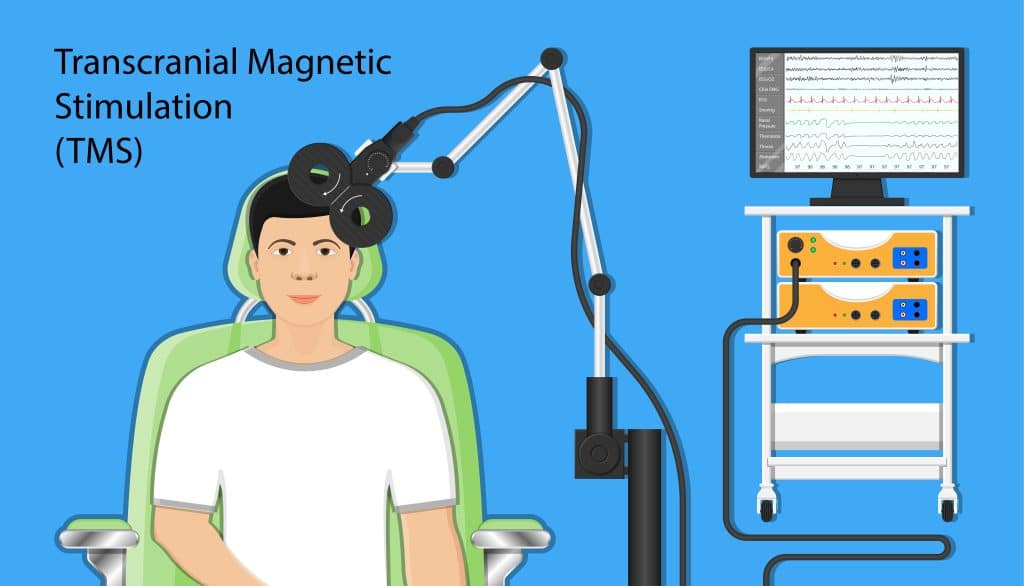
For those uncomfortable with everything that comes with ECT, there’s a newer answer in the form of TMS, or transcranial magnetic stimulation therapy. TMS also involves zapping the brain, but rather than with an electric current, TMS uses magnetic fields. This newer brain-zapping technique is said to have a higher success rate than its ECT counterpart, but it’s hard to get a good consensus on this. Some sources put response rates at 83% and remission rates at 62%.
TMS comes with the benefits of not needing anesthesia, so patients are awake during the procedure. The pulses it sends feel like nothing more than light tapping, which is done with a small electromagnetic pad put on the head to stimulate certain parts of the brain. It has shown to increase neural activity within the brain, and comes with no recovery time or major side effects. It’s a less invasive procedure, which lasts approximately 18 minutes.
To give an idea of how little agreement there is on efficacy, consider that the same article that put response and remission rates for TMS at higher than for ECT, goes on to say later in the article, “There is evidence to suggest that of the 2 treatments, ECT has better outcomes. This means that it is generally more effective, causes longer-lasting improvements in mood, and may even result in larger improvements in mental health.” For specifically depression, it says ECT has a success rate of 75-83%. To me this indicates a lot of varying information, with no real consensus on the topic.
In terms of other comparisons, ECT is usually given about 10-12 times, at a rate of 2-3 times per week, while TMS treatments go on around six weeks, with sometimes up to five treatments per week. In terms of cost, remember ECT requires going under anesthesia, and that automatically raises the cost. A set of sessions can be as much as $12,000 or more. TMS isn’t much cheaper, but can go down closer to $8,000 for a full set of treatments, and go up to about $12,000. Ketamine treatments also aren’t cheap, and cost several thousand for a full set.
Ketamine vs electroshock
In order to make statements about a treatment, it first has to undergo many research experiments. When looking at the comparison between two treatments, its nice to get a consensus from multiple pieces of research. Until this is done, we only get a partial picture, and sometimes, information is incorrect. By repeating processes over and over and looking for outcomes, it becomes possible to make statements. A statement made without this process, and without a consensus, is much weaker than one made off the basis of multiple research that all confirm the same point.
The reality is that there’s no formal consensus on any of this because not enough research exists. Clinical trials and assessments cost money, and alternative treatments are rarely funded by big money enterprises like pharmaceutical companies. So even if they’re working treatments, unless they’re popularized to the point that someone wants to invest enough to do trials, the population won’t know about them.
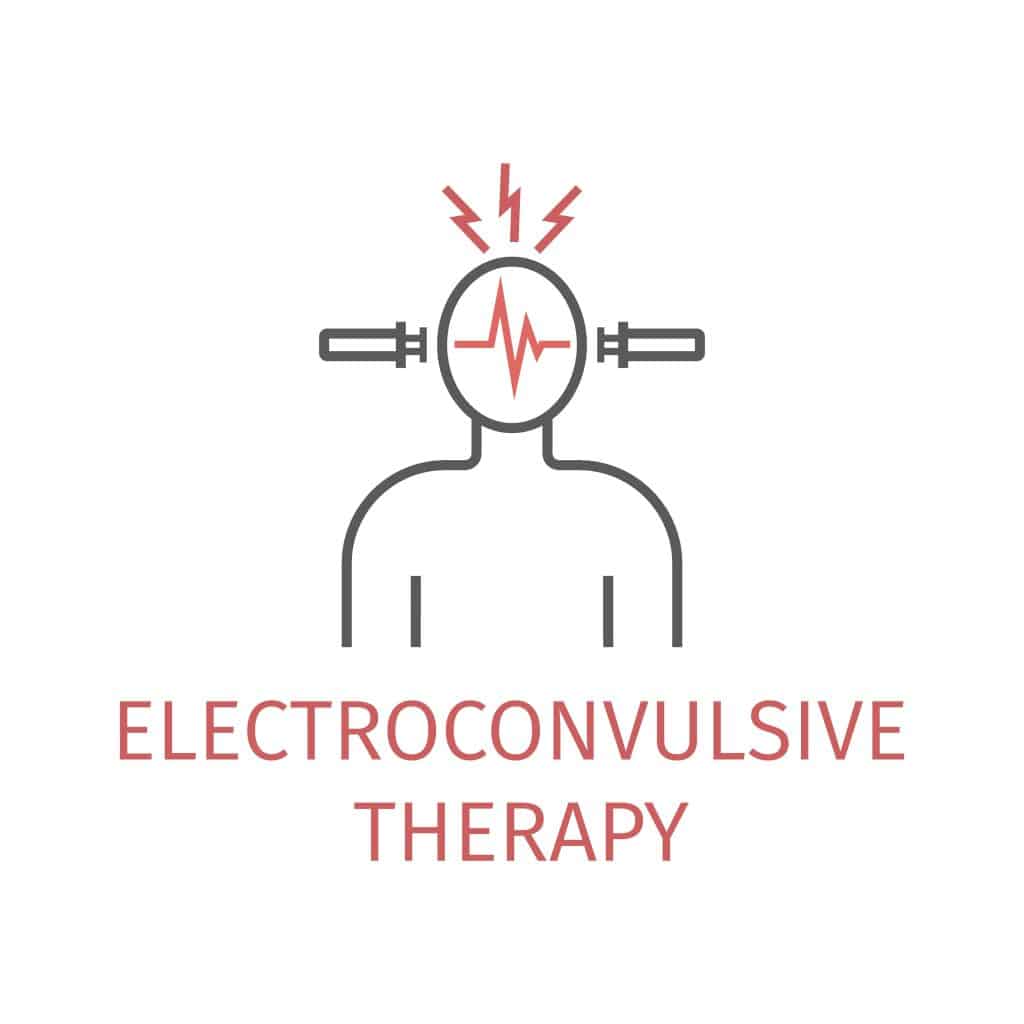
We don’t know what percentage of people are helped by electroshock or TMS or ketamine. We just know that these therapies seem to help *some people, and often, they seem to help *some people that ‘standard’ or ‘Western’ medicine, doesn’t.
In a recent systematic review entitled Efficacy and Safety of Ketamine vs Electroconvulsive Therapy Among Patients With Major Depressive Episode, researchers examined the question of whether ECT is as effective as ketamine (which itself comes without a general consensus on helpfulness).
In order to do this, investigators looked at six trials comprised of 340 patients total, found through PubMed, MEDLINE, Cochrane Library, and Embase. The studies included in the paper all have a diagnosis of depression that uses standardized diagnostics, intervention/comparator groups which consist of ECT and ketamine, and use depressive symptoms to show efficacy using standard measures.
The results showed that “The overall pooled SMD for depression symptoms for ECT when compared with ketamine was −0.69 (95% CI, −0.89 to −0.48; Cochran Q, P = .15; I2 = 39%), suggesting an efficacy advantage for ECT compared with ketamine for depression severity.” They did not find any difference when looking “between groups for studies that assessed cognition/memory or serious adverse events,” though the two had their own unique profiles for adverse effects.
The overall findings suggest that in the acute phase of depression treatment, that electroshock therapy might be more effective than ketamine. I can’t stress enough however, that this would probably mean more, if we could assign number values to any of it. Saying ECT might be more effective than ketamine, says nothing about how effective ketamine is. It does, however, suggest that there is yet another alternative treatment out there, that might be giving ‘Western’ medicine, a nice run for its money.
Conclusion
Electroshock and TMS are interesting treatments, but not necessarily up everyone’s alley. And there’s still only a sparse amount of good information out there. For now, these treatments do exist for those out of other options, or who like the idea of having their brains electrocuted. Given how ketamine has shot up in popularity recently, its not much of a stretch to think it might be common practice for us all to have our brains zapped soon. And who knows, maybe that’s a good thing. I admit that on my end, I want to know a little more first.
Welcome to the site! Thanks for joining us at Cannadelics.com; a news platform dedicated to bringing you optimal reporting for the cannabis and psychedelics fields. Stop by regularly to stay updated, and subscribe to the Cannadelics Weekly Newsletter, so you’re never late to get the news.


